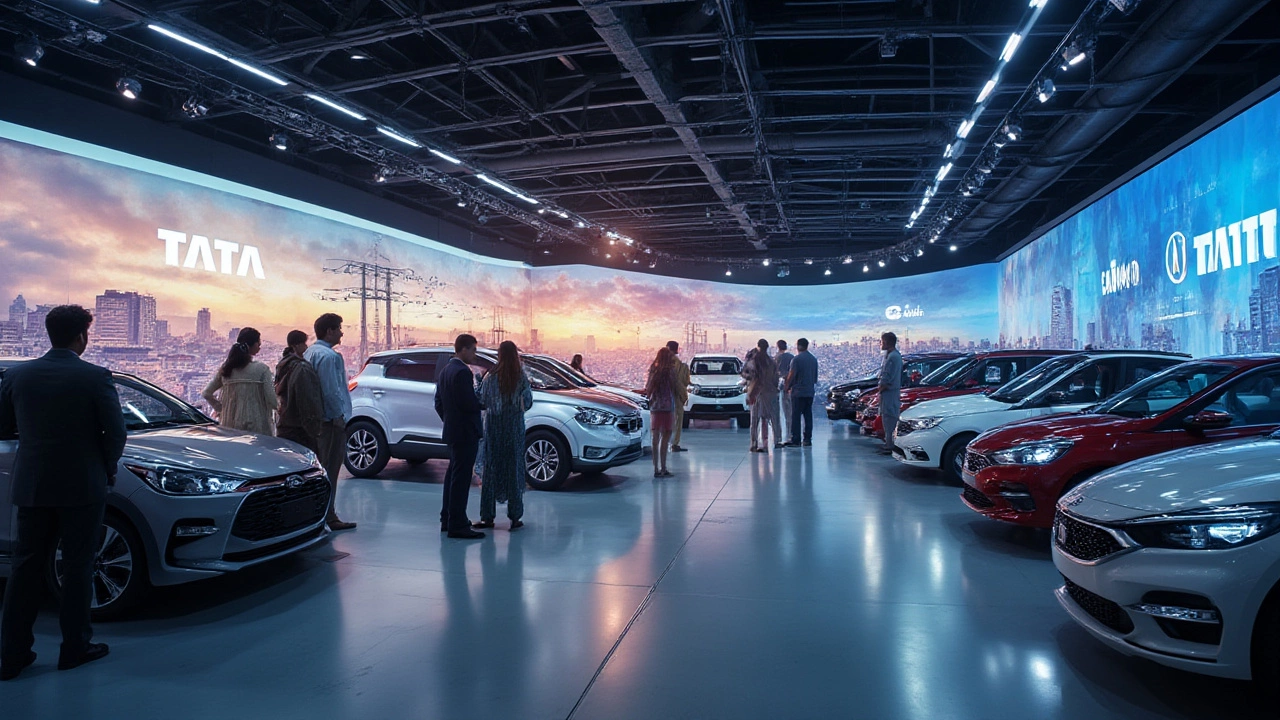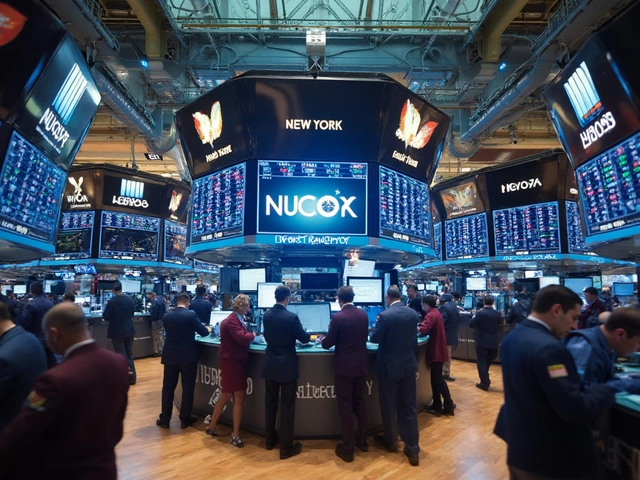Picture a bright yellow Tata Nano zipping down the Pacific Coast Highway, tiny but hard to miss, wedged between a Chevy Silverado and a Tesla Model 3. Seems odd? That’s because most Americans have never seen a Tata car on US roads. It sounds almost incredible, given Tata Motors is one of the biggest automakers in India—and actually owns British brands like Jaguar and Land Rover. So, are Tata cars secretly roaming around New York or LA? The reality is a mix of ambition, business chess games, and some eye-opening roadblocks.
The Tata Motors Story: Ambitions Beyond Borders
Back in 2008, Tata Motors made global headlines after acquiring Jaguar and Land Rover from Ford for $2.3 billion. Overnight, Tata wasn’t just an Indian brand anymore; they were running two of the most iconic names in British automotive history. But Tata’s real dream? Becoming a truly global carmaker. Ideas of launching affordable, quirky models like the Tata Nano in the US started picking up steam. Tata Motors found quick success in markets like South Africa, Latin America, and parts of Europe, catering to buyers looking for tough, inexpensive vehicles.
However, the US was always a different beast. The American automotive scene is fiercely competitive, dominated by Ford, GM, Toyota, and an increasingly energetic crowd of electric car startups. Tata’s executives eyed the US with interest, believing price-conscious American drivers might appreciate a cheap, no-frills car. The Tata Nano, famously launched in India as the world's cheapest car at $2,000, got major attention from the global media. People joked about how you could buy a Nano for less than some widescreen TVs. At one point, analysts even wondered if waves of Nanos would sweep across American college campuses as the new cool beater car.
But here's the twist—the Nano remained a media darling, not a street fighter, and never rolled its wheels onto American highways. Tata Motors had ambition and an intriguing product, but ambition sometimes isn’t enough.
Why Tata Cars Don’t Appear on American Streets
Diving deeper, legal and practical roadblocks kept Tata from making a splash in the US. The first massive hurdle? Safety standards. The US has some of the strictest automotive safety regulations worldwide, mainly thanks to the National Highway Traffic Safety Administration (NHTSA). To sell a car in the US, automakers have to meet a dizzying checklist of crash standards. The Tata Nano, for all its cuteness and affordability, just couldn’t clear those hurdles. It lacked features like airbags, anti-lock brakes, and strong crash protection–simply put, the Nano wasn’t designed for what Americans expect in safety tech.
Next came the emissions standards. The US Environmental Protection Agency (EPA) demanded much lower emissions than the Nano produced in its Indian configuration. Retrofitting cars to pass emissions wasn’t just costly; for a car as cheap as the Nano, it killed the whole low-price appeal. Upgrading to meet American environmental and safety rules would balloon the price way past what Tata considered its niche.
It’s not like Tata never did their homework. Executives tested the waters by showcasing the Nano at the Detroit Auto Show in 2010. The buzz was real, but once US regulations and dealer networks entered the conversation, Tata’s plans cooled off. A few business journalists reported back then that Tata was "studying" the market and might launch within a few years, but the math never made sense. Even other Tata cars like the Tiago, Tigor, or Nexon faced the same problems. Making those cars "America-ready" would have meant big investments for uncertain returns. And with giants like Honda and Hyundai already slugging it out at the budget end of the spectrum, Tata saw little space to wedge themselves in.

The Jaguar Land Rover Exception: Tata’s Surprising American Influence
Now, here’s something that catches a lot of people off guard—while Tata isn’t selling Tata-badged cars in the US, they’re still major players. Remember, Tata Motors owns Jaguar and Land Rover. These brands sell tens of thousands of luxury cars and SUVs across America every year. The shiny Range Rovers you spot in Beverly Hills or that Jaguar F-Type racing around Miami Beach? Both have Tata pulling the strings back in India.
After Tata’s takeover, they pumped serious money into reviving these British brands. Take a look at the sales:
| Year | Jaguar Sales (USA) | Land Rover Sales (USA) |
|---|---|---|
| 2015 | 14,466 | 70,582 |
| 2018 | 30,483 | 92,143 |
| 2021 | 17,929 | 70,712 |
Sure, these aren’t Tata cars per se, but Tata’s fingerprints are all over the product planning, engineering, and global supply chain. If you dig into the finances, parts of your $90,000 Range Rover end up supporting a company headquartered in Mumbai.
Some car fans speculate: could Tata eventually introduce one of its own branded models, maybe an electric vehicle, to the American market under a new strategy? Tata has shown interest in affordable EVs back home. But with American buyers increasingly picky, and competition from both Detroit and China heating up, Tata’s focus seems stuck on supporting their luxury brands rather than bringing budget Tata cars to North America.
Could Tata Cars Ever Fit the American Dream?
Here’s where things get interesting. The landscape in the US auto market is shifting. There’s a growing appetite for clean, cheap urban runabouts—think Chevy Bolt, Nissan Leaf, or the tiny Fiat 500e. The growth in ride-sharing, environmental awareness, and young buyer preferences could open a crack for a brand like Tata. Especially as electric vehicles get cheaper.
Tata already has strong experience selling EVs in India, with models like the Nexon EV flying off dealer lots. The company also knows how to build cars tough enough for rough roads and, importantly, at a price the average buyer can imagine paying. But challenges remain. American buyers expect more power, more interior space, and a long list of comfort and tech features, even in a "cheap" car. They also want strong resale value—something that would take years for a new entrant like Tata to prove.
Insurance is another headache. New brands face steeper costs, since insurers have no claims data. Plus, you have to establish a dealer and service network coast to coast. People in the US love the peace of mind of buying from Toyota dealerships that pop up in every town or knowing you can service your Ford in any small city in Ohio.
On top of that, the American market is already flooded with imports covering every possible niche. Chinese brands have tried entering before, like BYD and Geely. Each time, facing the same regulatory and business challenges that tripped up Tata’s dreams. The only exception has been when a new brand offers stunning value, reliability, or some other wow factor that American drivers just can’t pass up.

What American Car Buyers Should Know about Tata
Curious buyers sometimes ask whether you can import and register a Tata car yourself. Technically, you can bring in almost any foreign-market vehicle if it’s at least 25 years old or pass the strict DOT and EPA requirements. But for newer Tata cars, the hassle and red tape are enormous—and most states will flat-out refuse registration without proven crash and emissions certifications. You’ll see the occasional used Tata Safari or Xenon pickup up for sale in classic car circles or at expat events, but these are unicorns, not future traffic jams.
Tata’s heart still beats for India and emerging markets. The company continues to hammer out new compact SUVs and hatchbacks aimed at urban drivers, with a laser focus on keeping costs low and reliability high. As for American buyers, those curious about Tata’s strengths might consider Jaguar or Land Rover, both of which benefit from Tata’s solid management and investment. And if Tata does launch electric cars in the US someday, they’ll have some pretty wild stories to tell—starting with this tale of ambition, challenges, and global ambition.
One thing is certain—if you spot a Tata car cruising down the highway in Dallas or Atlanta today, you’re probably looking at a rare import, a show car, or perhaps a signal of what could happen if market tides shift. Until then, the legend of Tata in America remains just that—a legend, waiting for its next big chapter.










